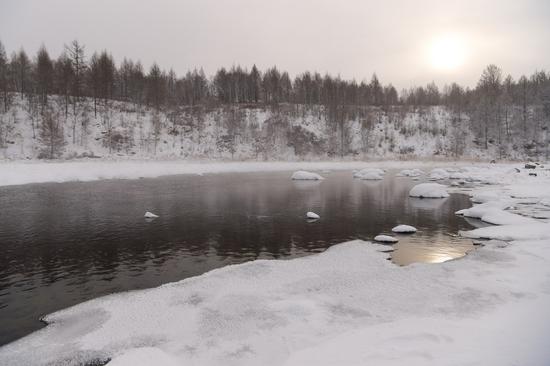Researchers reconstruct temperature changes on north China plain spanning 30,000 yrs

Photo taken on Jan. 6, 2021 shows water flowing in a section of the Halha River in the city of Arxan of Hinggan League, north China's Inner Mongolia Autonomous Region. (Xinhua/Li Zhipeng)
Chinese researchers have reconstructed the temperature and hydrological changes in the monsoonal north China plain over the past 30,000 years.
The results showed that the air temperature in the north China plain was about eight to nine degrees Celsius warmer during the mid-Holocene (about 6,000 years ago) than during the Last Glacial Maximum (about 22,000 years ago), and that the soil pH value is negatively correlated with soil moisture but with a lag of 2,000 to 4,000 years due to the buffering effect of carbonates, according to the research article published in the journal Quaternary Science Reviews.
By contrast, soil moisture increased synchronously with air temperature, suggesting that East Asian summer monsoon precipitation will increase and north China will become wetter in the near future as global warming continues, the research article noted.
Additionally, the initial increase in land and sea temperature during the last deglaciation lagged summer insolation at northern high latitudes and it happened earlier than the concentration changes of atmospheric carbon dioxide, indicating that insolation was the ultimate trigger of the last deglacial warming.
East Asian summer monsoon is an important part of the global monsoon circulation system and crucial for the water and heat transfer between the northern and southern hemispheres.
The study was carried out by researchers from the Institute of Geology and Geophysics, the Chinese Academy of Sciences.
